Risk of Kashmir "powder keg" explosion
(Baonghean) - The suicide bombing in Pulwama, Kashmir that killed 40 Indian soldiers has erupted into a military conflict when both India and Pakistan launched airstrikes on each other's territory.
This latest outbreak of conflict marks the most serious escalation of tensions between the two countries in decades, causing the international community to worry about the possibility of a war like the three wars that have occurred between the two sides in the past.
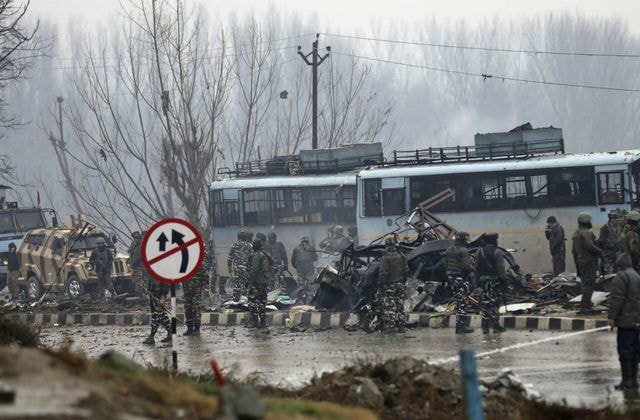 |
| India accused Pakistan of being involved in the attack that killed 44 soldiers. Photo: US News |
Hot and cold are unpredictable.
The spark for the new flare-up in tensions between India and Pakistan was a deadly bombing in Indian-controlled Kashmir on February 14 that killed 44 soldiers.
The Pakistan-based Islamist group Jaish-e-Mohammad said one of its members carried out the suicide bombing, one of the biggest losses suffered by the Indian army in decades by militants.
Despite Pakistan rejecting all allegations from India and the international community about its involvement behind the bloody attack, India still decided to take a tough retaliatory step by airstrike on a training camp of the Jaish-e-Mohammad group in the Pakistan-controlled Kashmir region, intercepting Pakistani fighter jets that violated its airspace and forcing them to turn back.
Despite being passive, the Pakistani air force immediately attacked Indian military facilities, shot down two planes and captured Indian pilots.
Pakistan then took the initiative to ease tensions by returning to India the pilot captured by its forces - a move that raised international expectations for a period of peace, which would gradually lead to a resolution of the conflict between the two sides. However, Pakistan's move failed to maintain the "ceasefire" between the two sides even for a day.
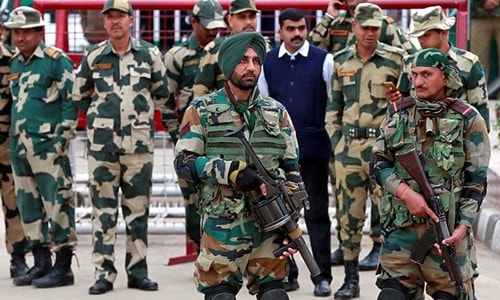 Indian soldiers in Kashmir on March 2. Photo: AFP Indian soldiers in Kashmir on March 2. Photo: AFP |
The same evening the country returned the pilot to India, fighting continued, in which two Pakistani soldiers were killed in a shelling exchange with India along the Line of Control.
Meanwhile, India also reported three civilians killed by Pakistani artillery fire, while another remains in critical condition.
Fighting continued until March 3. Some sources said that clashes between soldiers from both sides broke out at least 8 locations along the border between the two countries in the Kashmir region.
New phase of old conflict
The latest round of conflict between India and Pakistan ultimately boils down to the age-old issue of sovereignty over the Kashmir region. The two sides have been locked in a dispute over the region for more than 70 years, since their independence in 1947.
Although by 1949 the two sides had agreed on a ceasefire with the Line of Control being formed, large and small clashes continued to occur, including three major wars in 1947, 1965 and 1971.
During this period, Pakistan-based extremist armed groups regularly carried out attacks on the Indian-controlled Kashmir region in pursuit of separatist ambitions.
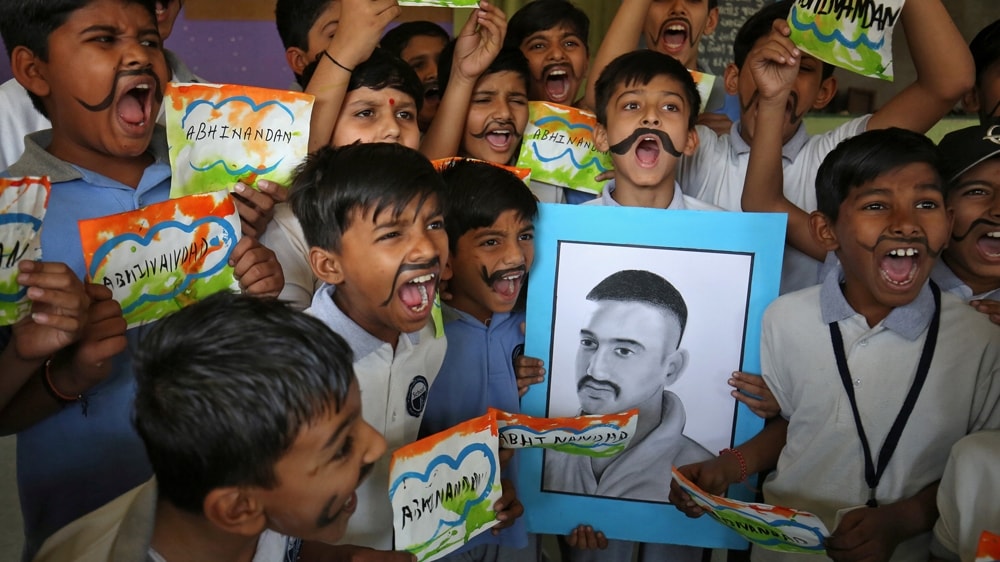 |
| Students at an Indian school celebrate the release of a pilot from Pakistan. Photo: Reuters |
India accuses Pakistan of training, arming and helping these militants. The dispute seems to be endless.
Through successive prime ministers, India has consistently viewed Pakistan-based jihadist terrorist groups such as Lashkar-e-Taiba and Jaish-e-Muhammad as an existential security threat. Officially, Pakistan has denied supporting these jihadist forces.
In a tit-for-tat tactic, India has also tried to stir up separatism among the Baloch and Pashtun minorities shunned by Pakistan but has been unable to stop the daring attacks by Pakistani jihadists.
When he took office as India's prime minister in 2014, Narendra Modi vowed to counter the threat from Pakistani jihadists with strong measures, including using military strikes that he called "tactical strikes."
Mr. Modi has gone further than previous prime ministers, promoting the motto “attack is the best defense.” However, India has limited its attacks to rebel bases rather than targeting the official Pakistani military.
Still, this new round of conflict marks the first time since 1971 that Indian warplanes have flown over the disputed region of Kashmir and struck inside Pakistani territory.
Analysts see this event as marking a new turning point in the more than half-century conflict between India and Pakistan under the impact of Prime Minister Narendra Modi's new approach.
Total war?
India currently has a slight advantage on the diplomatic front over Pakistan as it has the support of many countries in its anti-terror operations. However, the world is still calling on both sides to exercise restraint to prevent a full-scale war.
Although India has a much larger economy than Pakistan, and its military superiority is also overwhelming, with forces and arsenals 3 to 5 times larger than Pakistan's, but once both sides use their nuclear arsenals, it is unclear which side will bite which.
According to the Arms Control Association, India and Pakistan each have about 120-140 nuclear warheads. If they had to use these weapons, the two countries would not only destroy each other but also destabilize the entire South Asian region.
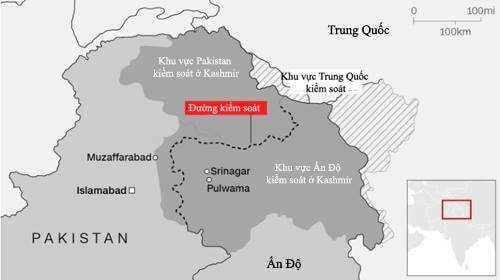 |
| Areas controlled by both sides in Kashmir. Graphics: CNN |
According to analysts, the possibility of a full-scale war between the two sides is not high because this is not what both sides want. Whether this war happens or not depends more on India, as this country is aiming to build the image of a country responsible for world peace, so that one day it will become a great power.
Therefore, all calculations of Prime Minister Narendra Modi will be moderated. On the other hand, India understands that if the current conflict is pushed to the level of a total war, it will face not only Pakistan but also China - a country that maintains very close military relations with Pakistan.
Considering the political will of both India and Pakistan, the risk of all-out war at this time is not much. However, with a permanent and long-lasting flashpoint like Kashmir, any miscalculation by either side could lead to unpredictable consequences.
And leaders of both countries probably also understand that further militarization of the conflict only weakens the possibility of reaching a negotiated solution.



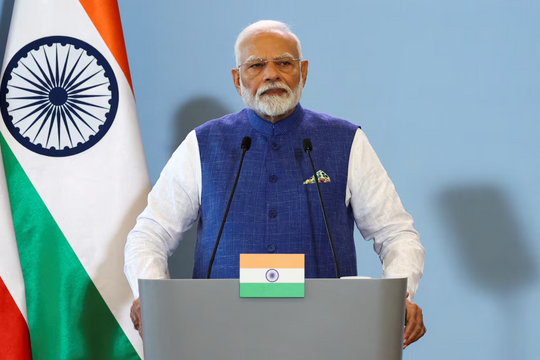
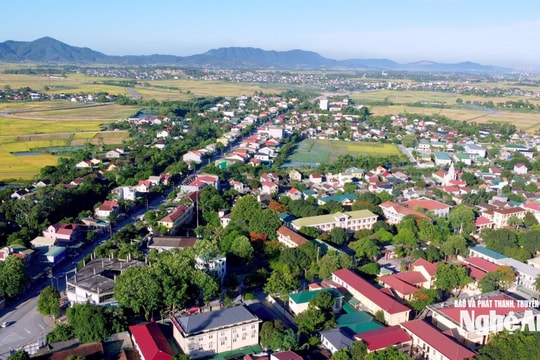

.jpeg)

